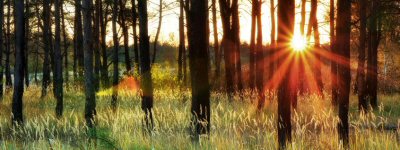
Reverence for Beauty
When I first came down to work in London ten years ago, I joined a posh Notting Hill gym. The young Australian man who interviewed me and filled in the application form, asked for my title. I’d just left theology college, ministry training complete, and was quite chuffed with my new title of reverend – so that was what I told him. He looked slightly confused but finished the application and in a couple of days they sent my membership card to Lady Sarah Tinker – clearly thinking that the title reverend meant you were part of the aristocracy. And OK, I admit – I milked it for all it was worth and delighted in their greeting me as ‘Good morning Lady Sarah’ for the rest of the year.
I’ve tried using the title reverend to get off parking tickets but it’s never worked – and in truth I have some ministerial colleagues who would never use the title. The root of reverend is reverence – meaning deep respect, holding in highest regard, a sense of awe and wonder even, to be amazed in the presence of something most precious – and even on the best of Sundays most ministers of religion know we’re not in that ‘most precious’ league!
But reverence is a word I’m reclaiming this month. As you came in today you’ll have received a copy of our 14 days of reverence challenge and we’re inviting anyone who wants, to join in this project of noticing, of paying attention, of remembering the mystery and magic that is life itself. If you’re a podcast listener, just send us an email here at Kensington Unitarians and we’ll send you a digital copy of the booklet – most of which is based on the work of a great organisation called KindSpring, dedicated to encouraging us all to be kinder to one another and to ourselves. My thanks to them for this project, which I’m now passing on to you.
This feeling of reverence – I wonder when you have experienced that heightened sense of awe and wonder, of deepest appreciation? It seems to be a central human response to some aspects of life and though it’s found in all the world’s religious systems yet I think it goes beyond them. We feel it in moments of being lifted in some way, touched by something greater than ourselves. I’ve felt reverence in the presence of the new born and holding the hand of someone moving towards death. I’ve felt it when watching other natural processes like a chrysalis opening up to allow the scrunched wings of a butterfly to unfold, I’ve felt it in the arms of those I love and who love me, and in majestic natural surroundings, by waterfalls and on mountain tops, or late at night staring into a star filled sky. Talking to some of you I’ve heard descriptions of nests of baby birds clamouring for food, newts found in ponds, streets of cherry blossom, the birth of children, the death of loved ones, singing in choirs or listening to sublime pieces of music. UUA Minister Kendyl Gibbons, who has written powerfully about the need for religious humanists to reclaim words like reverence, talks of ‘moments that left us with a lump in our throat or a song in the heart’. I’d like to hear what some of those moments are for you.
Focusing on reverence reminds us to pay attention, to not take anything for granted, and in today’s service we’re considering reverence for beauty. We’re honouring our human ability to create beauty and honouring the beauty of the earth on which we live. We’re encouraging one another to see beauty in humanity, to go beyond any dualistic thinking that has us categorise – this as beautiful and this as ugly. Reverence takes us deeper to an awareness of a beauty in all that is, reverence encourages us to accept what is, in its imperfections. Like that Zen master, in the story we heard earlier on, who sees the perfectly tidy garden and shakes the leaves from the tree to mess it up a bit, we know that real beauty is always flawed, never permanent, that by its very nature beauty is a fleeting experience of the here and now.
American priest and theologian Matthew Fox, who did so much to develop the ideas of creation spirituality, has extensively explored our human ability to create beauty. ‘Beauty saves,’ he writes; ‘Beauty heals. Beauty motivates. Beauty unites. Beauty returns us to our origins and here lies the ultimate act of saving, of healing, of overcoming dualism. Beauty allows us to forget the pain and dwell on the joy.’
And I guess that’s some of what brings us to gather in a community like ours – not denying the pain and difficulties of life but rather holding them in love and together finding that which is beautiful, that which inspires us and brings us joy in this crazy thing called life that we’re all so very much engaged with. Let’s end today by speaking together the words of a Navajo blessing:
“Beauty is before me, and Beauty behind me
above me and below me hovers the beautiful.
I am surrounded by, I am immersed in it.
In my youth, I am aware of it,
and, in old age, I shall walk quietly the beautiful trail.
In Beauty, it is begun. In Beauty, it is ended.”
If you would like a copy of our 14 days of reverence booklet just ask.
Rev. Sarah Tinker
Sermon – 8th May 2016
